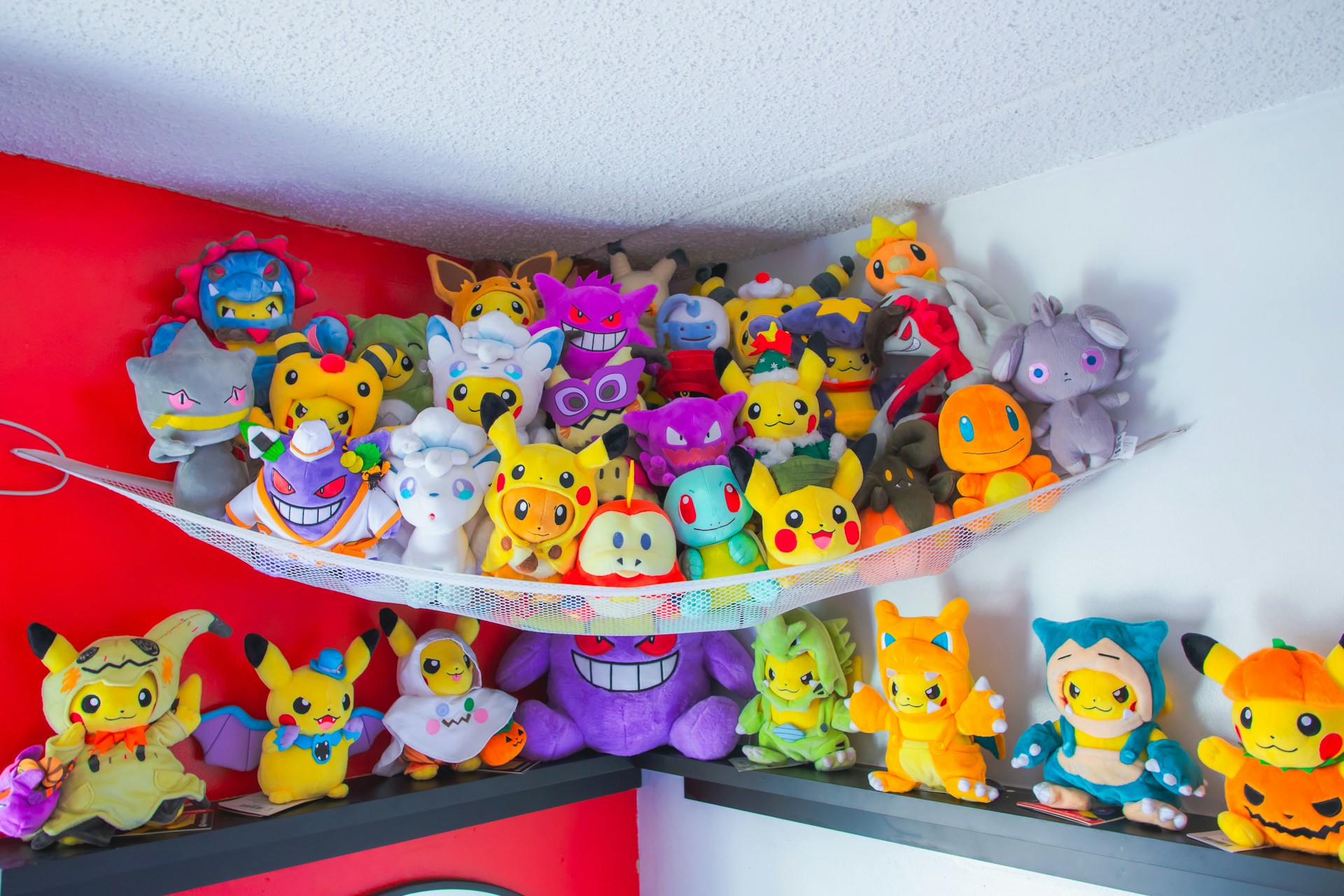
Calling all Pokémon trainers! Are you yearning to capture the thrill of the Pokémon world in a tangible way? Well, look no further than the exciting realm of DIY Pokémon crafts! This article will ignite your creativity, offering a treasure trove of ideas to bring your favorite Pokémon to life. We’ll explore an array of crafting techniques, from crocheting adorable plushies to constructing impressive papercraft masterpieces. Whether you’re a seasoned crafter or a curious beginner, there’s a DIY Pokémon project here waiting to be tackled.
Getting Started
Now that you’re ready to embark on your DIY Pokémon adventure, let’s dive into how to get started. First and foremost, you’ll need to gather all the necessary materials. This includes crafting supplies like paper, markers, scissors, glue, and any additional decorations you’d like to use to bring your Pokémon to life. You can also consider using recycled materials for an eco-friendly touch.
Once you have all your materials ready, it’s time to choose which Pokémon you want to create. Whether it’s a classic like Pikachu or a more obscure favorite, the choice is yours. Take some time to research the characteristics and features of your chosen Pokémon to ensure your craft stays true to its original design. Now that you’re equipped with materials and inspiration, let your creativity soar as you begin crafting your very own Pokémon masterpiece!
Crafting Pokémon Characters
Now that you’ve gathered your materials and chosen your Pokémon, it’s time to dive into the crafting process. Follow these steps to bring your favorite Pokémon to life:
- Gather Materials:
- Paper or cardstock
- Markers or colored pencils
- Scissors
- Glue or tape
- Optional: Googly eyes, felt, stickers, yarn, or any other decorative materials you’d like to use.
- Sketch Your Pokémon:
- Start by sketching the outline of your Pokémon on the paper or cardstock.
- Use reference images to ensure accuracy in capturing its unique features and proportions.
- Color and Decorate:
- Once you’re satisfied with the outline, use markers or colored pencils to color in your Pokémon.
- Add details like eyes, mouth, and any distinctive markings or patterns.
- Get creative with decorative elements like googly eyes, felt cutouts for features, or stickers to enhance your Pokémon’s appearance.
- Cut and Assemble:
- Carefully cut out your Pokémon along the sketched outline.
- If your Pokémon has multiple parts (e.g., ears, tail), cut those out separately.
- Assemble the different parts together using glue or tape to create a three-dimensional effect.
With these steps, you’ll be able to craft your very own Pokémon characters that are sure to impress friends and fellow Pokémon enthusiasts alike!
Designing the Pokémon World
As you delve into crafting your Pokémon adventure, it’s essential to design a captivating setting for your Pokémon world. Consider the following elements to make your DIY Pokémon experience truly immersive:
- Terrain and Landscapes: Choose the type of environment your Pokémon will inhabit. Whether it’s lush forests, expansive plains, or mysterious caves, the landscape sets the stage for your adventure.
- Habitats for Pokémon: Define specific habitats within your world for different Pokémon species. Research the natural environments of your selected Pokémon to ensure they feel at home in your crafted world.
- Landmarks and Points of Interest: Integrate notable landmarks or points of interest that your Pokémon trainers can explore. This could include a Pokémon Center, a Gym, or even a legendary Pokémon’s lair.
Designing Pokémon Encounters
Building on the foundation of your Pokémon world, now focus on creating exciting and diverse Pokémon encounters. Here’s how you can make each encounter memorable:
- Wild Pokémon Hotspots: Identify areas in your world where trainers are likely to encounter wild Pokémon. This could be in tall grass, near bodies of water, or within specific terrains based on the Pokémon species.
- Unique Pokémon Challenges: Develop unique challenges or puzzles that trainers must solve to encounter rare or legendary Pokémon. This adds an element of strategy and adventure to your DIY Pokémon world.
- Trainer Battles and Gyms: Design Pokémon Gyms and establish criteria for trainer battles. Think about the type of Pokémon each Gym leader specializes in and the challenges trainers must overcome to earn Gym badges.
By meticulously crafting the setting and Pokémon encounters, you’ll elevate your DIY Pokémon adventure to a whole new level, ensuring an engaging and dynamic experience for both creators and participants.
Building Pokémon Structures
As you continue your DIY Pokémon adventure, the structures within your Pokémon world play a crucial role in enhancing the overall experience. Here’s a detailed guide on creating captivating Pokémon structures:
- Pokémon Centers: Design a Pokémon Center, a central hub where trainers can heal their Pokémon and access various services. Consider adding a distinctive architectural style and detailing the services provided within.
- Poké Marts: Create Poké Marts, establishments where trainers can purchase essential items for their journey. Think about the layout and merchandise arrangement to make these structures visually appealing.
- Gyms and Battle Arenas: Develop unique Gyms and battle arenas for trainers to test their skills. Each Gym can have its theme and challenges, ensuring a diverse and engaging experience for aspiring Pokémon masters.
- Professor’s Lab: Craft a Pokémon Professor’s lab where trainers receive their starter Pokémon and gather information about the Pokémon world. Consider adding research equipment and a distinctive laboratory setting.
- Pokémon Daycare: Include a Pokémon Daycare where trainers can leave their Pokémon to gain experience points. Create a nurturing environment and consider incorporating elements that reflect the Pokémon daycare theme.
By focusing on these key Pokémon structures, you’ll create a rich and immersive world for your DIY Pokémon adventure. Pay attention to the details, infuse creativity into the designs, and ensure that each structure contributes to the overall charm of your Pokémon universe.
Adding Interactivity
To elevate your DIY Pokémon adventure, incorporating interactivity is key. Begin by organizing your ideas with the following table:
| Interactive Element | Description | Purpose |
| Pokémon Encounters | Implement random encounters with wild Pokémon. | Enhance exploration and add excitement. |
| Gyms and Challenges | Design challenging obstacles within Gyms. | Test trainers’ skills and strategy. |
| Pokémon Daycare Events | Introduce events or activities at the Pokémon Daycare. | Add variety and encourage player engagement. |
Now, delve into specific ways to add interactivity:
- Pokémon Hideouts: Create hidden spots or hideouts where trainers can discover rare Pokémon or valuable items. Encourage exploration by integrating these secrets into different parts of your Pokémon world.
- Interactive NPCs: Populate your world with interactive non-player characters (NPCs) who offer quests, tips, or even trades. This adds depth to the narrative and provides trainers with additional challenges.
- Quests and Side Missions: Develop a series of quests or side missions that trainers can undertake. Whether it’s finding lost items, solving mysteries, or helping NPCs, these missions add depth to the storyline and reward trainers for their efforts.
- Pokémon Contests: Introduce Pokémon contests where trainers can showcase their Pokémon’s talents in various categories like beauty, cuteness, or strength. Incorporate judging criteria and rewards to make these events memorable.
- Seasonal Changes: Implement seasonal changes in your Pokémon world, affecting Pokémon availability and the overall environment. This dynamic element keeps the adventure fresh and encourages trainers to explore at different times of the year.
- Dynamic Weather Conditions: Integrate dynamic weather conditions that influence Pokémon encounters and battles. Rain, snow, or sunshine can impact the types of Pokémon appearing, adding an extra layer of strategy to the game.
- Interactive Training Areas: Design special areas where trainers can enhance their Pokémon’s abilities through interactive training exercises. This could include obstacle courses, agility challenges, or even friendly sparring matches.
By infusing these interactive elements into your DIY Pokémon adventure, you create a dynamic and engaging experience that captivates trainers and keeps them coming back for more.
